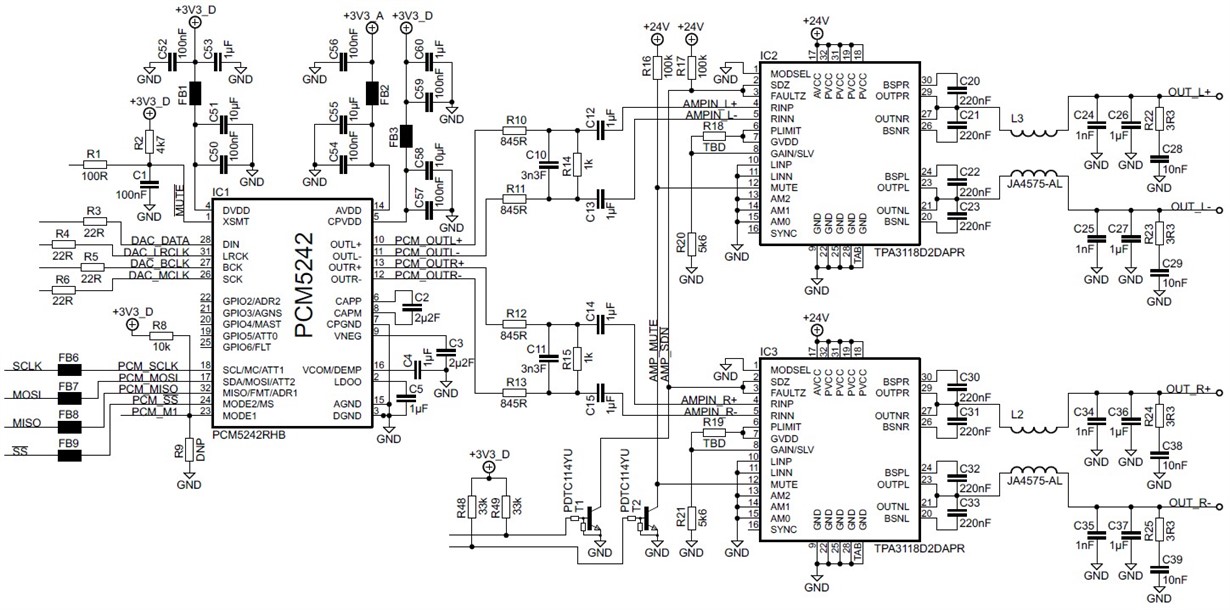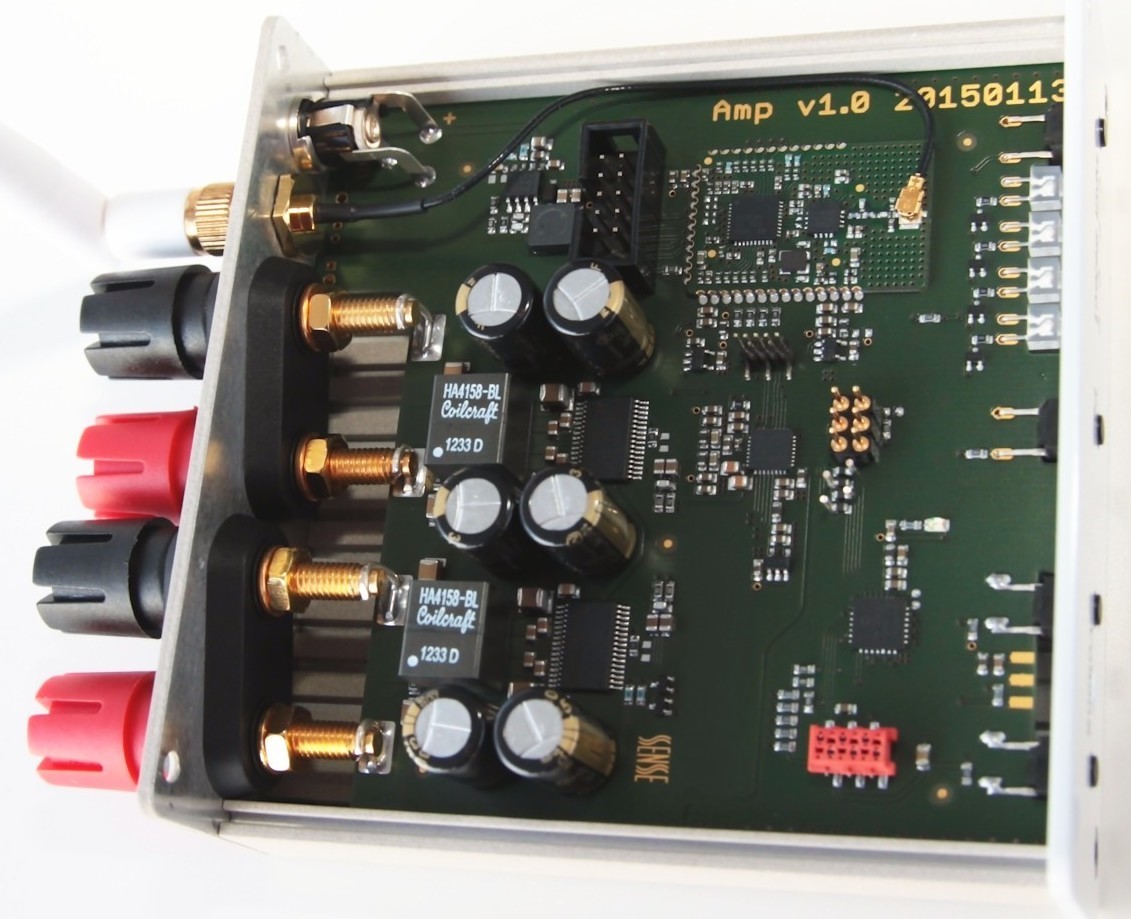Hi,
I implemented the PCM5242 DAC to feed my power stage with TPA3118D2. First I connected the parts directly having just a simple balanced RC filter in between. It does work, but the THD+N increase heavily with the output power. Starting from some good values below 0.05% for low power up to 5% and more at maximum output power. I noticed I definitely need to decouple the PCM5242 DAC from TPA3118D2 input. I placed small DC-blocking caps and everything work perfectly.
Now the question :) Could you shortly explain me, why do I need the AC-coupling caps between TPA3118D2 input and the PCM5242 DAC output? I thought using the PCM5242 DAC with the line driver output, without DC offset, I could connect the both stages directly?
If it doesn't work like that, and if I still definitely need the DC-blocking caps, I could better go for PCM5142. In fact I do not need the 4.2 Vrms output. Even with the lowest gain of the TPA3118D2 I have to attenuate the output signal of the PCM5242 not to overdrive the TPA3118D2.
Cheers,
Tomasz



